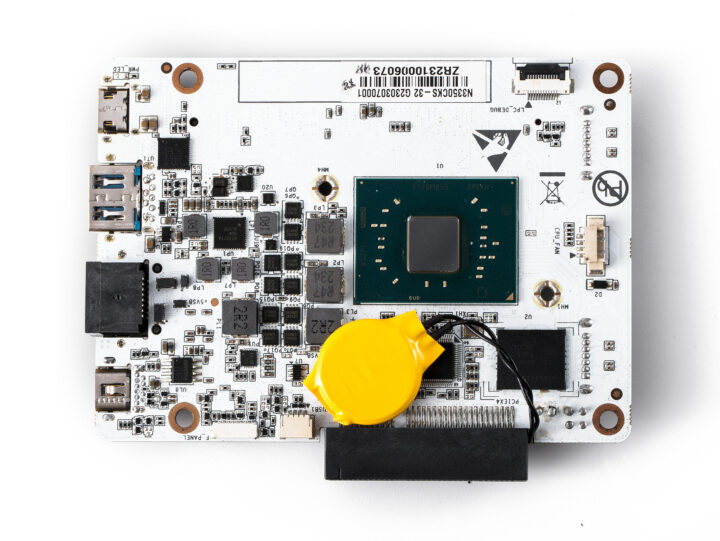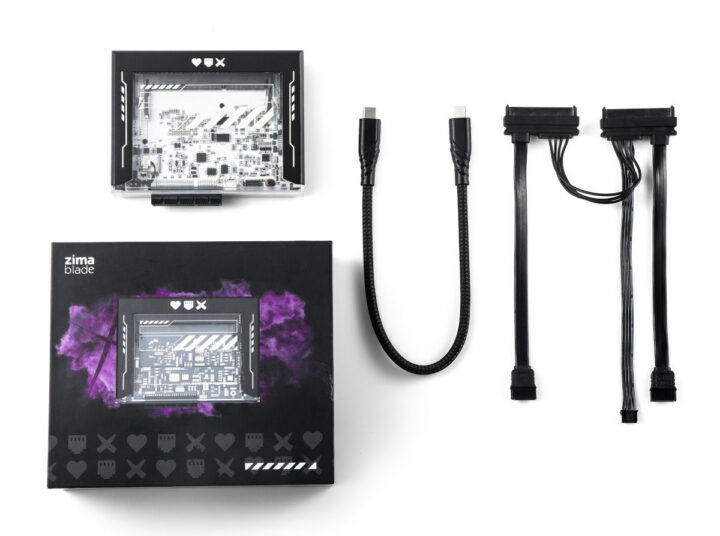ZimaBlade is an inexpensive low-profile board based on an Intel Celeron dual-core or quad-core processor and designed for server applications with a low-profile RJ45 Gigabit Ethernet port, two SATA connectors, and a PCIe slot, but not only as the board also comes with display interfaces such as mini DP and USB-C DisplayPort Alt. mode and a few USB ports.
It’s not IceWhale Technology’s first venture into portable server board as the company previously introduced the Zimaboard based on Intel Celeron Apollo Lake processors with many of the same features back in 2021. The new ZimaBlade offers more interfaces as well as a complete enclosure instead of just a large heatsink.
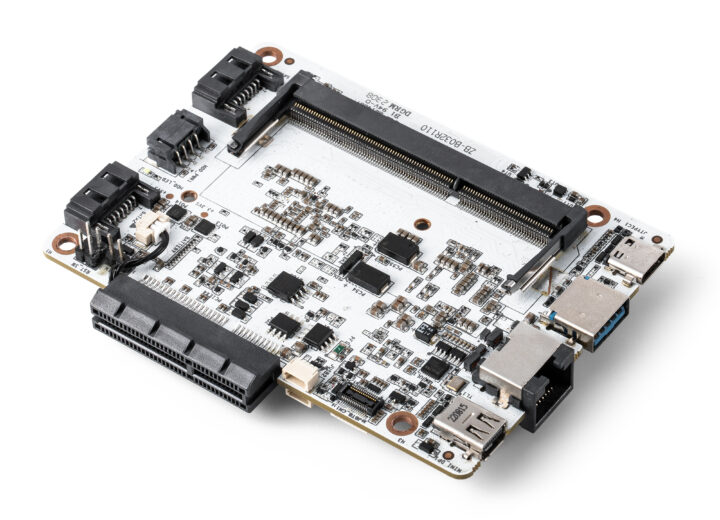
ZimaBlade specifications:
- SoC (one or the other)
- ZimaBlade 3760 – Intel Celeron dual-core processor up to 2.2 GHz (Turbo) with Intel UHD graphics; 6W TDP
- ZimaBlade 7700 – Intel Celeron quad-core processor up to 2.4 GHz (Turbo) with Intel UHD graphics; 10W TDP
- System Memory – Up to 16GB DDR3L memory via a single SODIMM slot
- Storage
- 32 GB eMMC flash
- 2x SATA 3.0 ports
- Display interfaces
- MiniDP port up to 4Kp60
- eDP connector
- DisplayPort via USB-C port
- Networking – Gigabit Ethernet RJ45 port
- USB – 1x USB 3.0 port, 2x USB 2.0 ports, 1x USB Type-C port for data, power, and display
- Expansion – PCIe 2.0 x4 connector
- Power Supply – 45 W USB Type-C power adapter
- Dimensions – 107 x 80 x 23 mm
- Weight – 175 grams
- Enclosure – Custom injection molded polycarbonate (opaque and transparent), aluminum alloy heatsink, and four black silicone feet
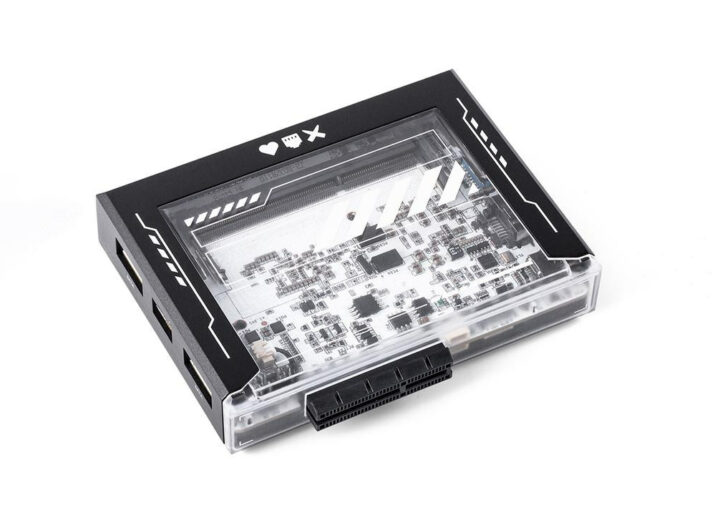
The ZimaBlade comes with the Debian-based CasaOS with “a streamlined Docker experience” with over 100,000 Docker apps to choose from (see GitHub repo for source), but as an x86 platform, it is also fully compatible with Windows, Ubuntu, Debian, Raspberry Pi OS, CentOS, OpenWrt, pfSense, Android, LibreELEC, and several other operating systems.
The ZimaBlade board can be used to create a personal NAS, a self-hosted AI server based on Auto-GPT open-source project, a media server, a retro-gaming console, and whatever you may think of. The company ran some benchmarks to compare it to a Raspberry Pi 4, and it’s about 2 to 4 times faster, or roughly equivalent to boards based on the Rockchip RK3588 SoC.
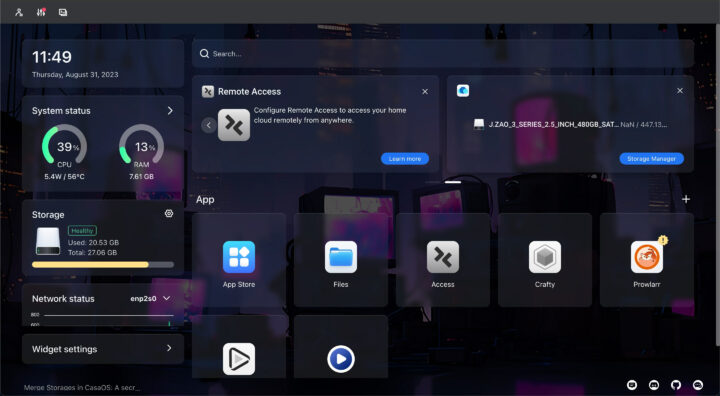
IceWhale Technology has just launched the ZimaBlade on Crowd Supply aiming to raise at least $50,000. Rewards start at $64 for the ZimaBlade 3760 Basic Kit with the board, the enclosure, a USB Type-C cable, and one SATA cable, while the ZimaBlade 7700 Basic Kit goes for $96, and you can get a ZimaBlade 12-Core 48 GB Cluster kit for $392 with three ZimaBlade 7700 boards, three 16 GB DDR3L memory sticks, three 12V/3A power adapters, three USB Type-C cables, three SATA cables and a dual 3.5-inch’ storage drive stand. Note the Basic kits require you to add your own RAM and power supply. Shipping adds $8 to the US and $18 to the rest of the world for the Basic kits, and deliveries are scheduled to start at the end of January 2024.

Jean-Luc started CNX Software in 2010 as a part-time endeavor, before quitting his job as a software engineering manager, and starting to write daily news, and reviews full time later in 2011.
Support CNX Software! Donate via cryptocurrencies, become a Patron on Patreon, or purchase goods on Amazon or Aliexpress


